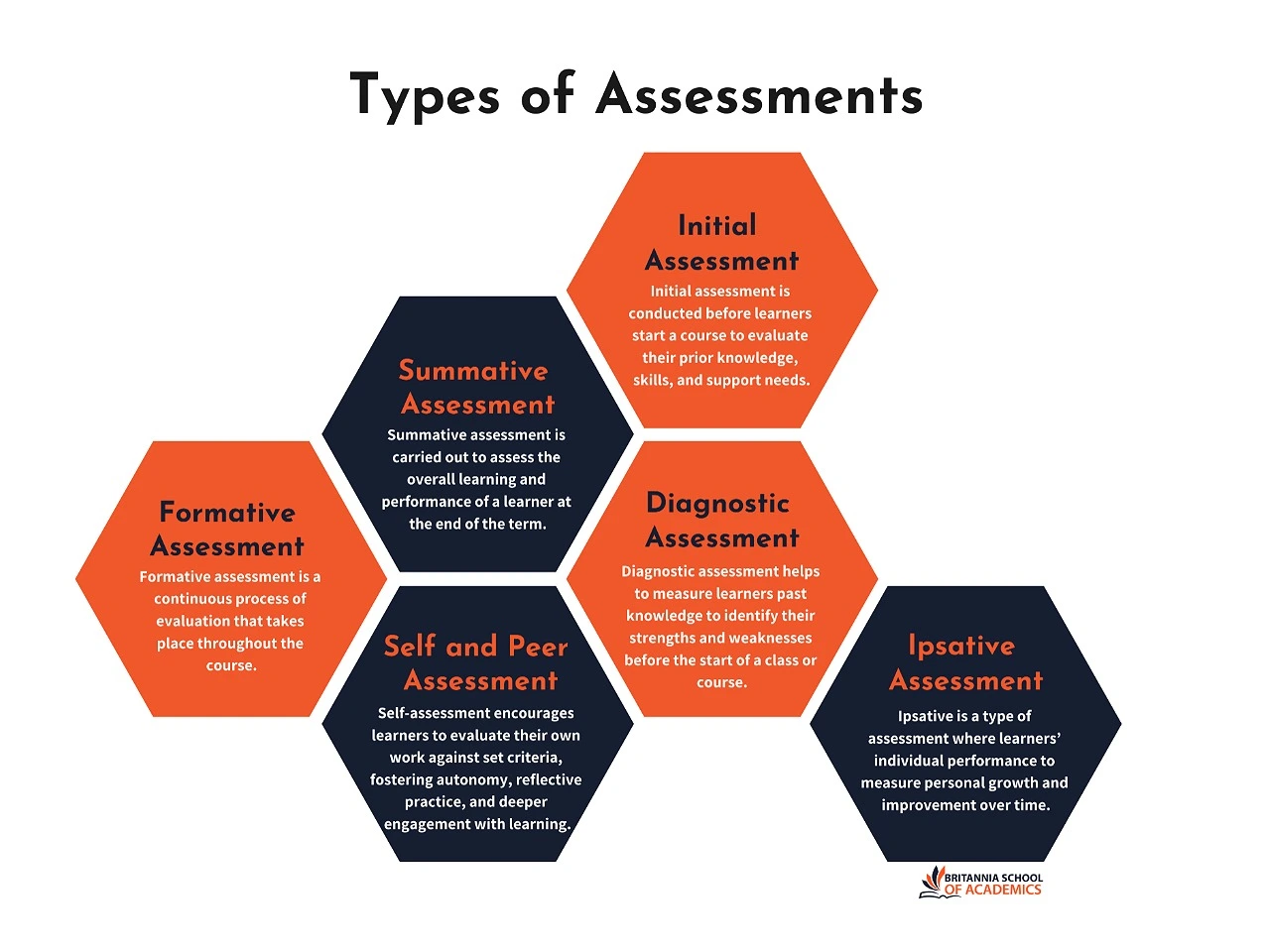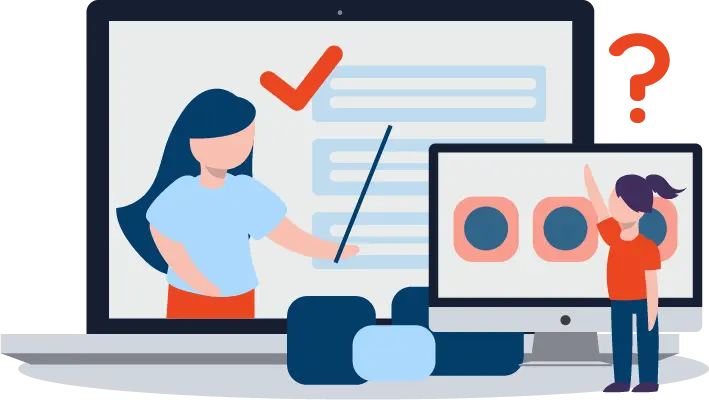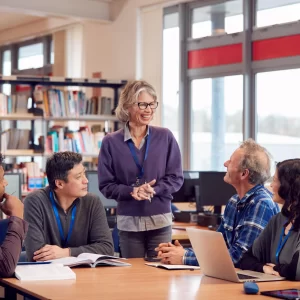Assessment and Feedback play crucial roles in shaping learners’ academic performance by recognising their strengths, addressing learning gaps, and promoting continuous improvement. Assessment is a structured evaluation process of a learner’s knowledge and skills, while Feedback serves as constructive guidance that helps refine understanding and skills and enhance competency.
Key Takeaways:
- Assessments provide educators with valuable insights into learners’ understanding, highlighting strengths and identifying areas for improvement to enhance learning outcomes.
- Constructive, specific, and detailed Feedback supports learners in refining their skills, fostering a growth mindset, and promoting continuous development.
- Regular assessment and Feedback help learners build confidence, enhance critical thinking, and develop problem-solving skills, preparing them for academic and practical challenges.
Assessment and Feedback are key to enhancing learners’ performance by identifying strengths, addressing gaps, and driving continuous progress. Effective assessment methods track learner development, while constructive Feedback supports improvement.
In this blog, we will explore how assessment and feedback elements contribute to better learning outcomes.

What is Assessment and Why Does it Matter?
Assessment is the process of collecting and analysing information about learners’ knowledge, skills, and abilities. It plays a vital role in education by tracking progress, identifying strengths and areas for improvement, and guiding future learning. Effective assessment benefits both teachers and learners, ensuring meaningful development.
Why is Assessment Important?
Measures Learning Progress: Assessment helps keep track of learning progress and identifies areas where a learner requires support from a tutor.
- For Teachers: It provides information on their teaching practices and helps teachers mould strategies to make them more effective.
- For Learners: It helps them to take ownership of their learning and track their progress.
Social media platforms are increasingly being used to support informal and collaborative learning. Teachers and learners use Twitter, Instagram, and YouTube to share resources and induce discussions. Social media lets learners consume educational content seamlessly and informally, making it fun and interesting.
Encourage Active Learning: Assessments engage learners in the learning process, improving critical thinking and problem-solving skills.
- Formative assessments such as quizzes, self-reflection, and peer feedback keep learners actively involved and help them adjust their study strategies.
- Summative assessments, like final exams, evaluate overall understanding at the end of a term.
Build Confidence: Regular assessment fosters confidence by allowing learners to see their progress over time.
- Regular assessments, such as practice tests and self-evaluations, help learners recognise their strengths and areas for improvement.
- Acknowledging achievements through assessments enhances motivation and self-belief and gives learners a sense of accomplishment, encouraging them to strive for further success.
What are the Types of Assessments?
Assessments come in various forms, each serving a distinct purpose in creating a structured and effective learning experience. Below are the key types of assessment used in education and training.

Formative Assessment - Assessment for Learning
Formative assessment is an ongoing process conducted throughout a course or programme to identify areas for improvement and support learners in enhancing their understanding before final evaluations. This type of assessment helps teachers adapt their teaching strategies to meet learners’ needs while encouraging active participation. Examples include quizzes, class discussions, self-assessments, reflective journals, and homework assignments.
Summative Assessment - Assessment of Learning
Summative assessment evaluates a learner’s overall performance at the end of a unit, course, or training programme. These high-stakes assessments determine whether learners have met the required learning objectives and are commonly used for certification or progression. Examples include final coursework submissions, end-of-year examinations, and competency-based assessments.
Self and Peer Assessment - Assessment as Learning
Self-assessment encourages learners to evaluate their own work against set criteria, fostering autonomy, reflective practice, and deeper engagement with learning. It helps learners develop a critical awareness of their strengths and areas for improvement. Self-assessment complements the formal assessment method and is often used in assignments, portfolios, and reflective journals.
In Peer Assessment, learners assess each other’s work based on agreed criteria, promoting collaborative learning, critical thinking, and evaluative skills. Peer assessment encourages constructive feedback, allowing learners to gain different perspectives and refine their understanding. It is commonly facilitated through structured rubrics, feedback forms, or discussion-based evaluations.
Initial Assessment - Screening Assessment
Initial assessment is conducted before learners start a course to evaluate their prior knowledge, skills, and support needs. It helps educators determine the most appropriate learning pathway, ensuring learners begin at the right level. This assessment may involve interviews, self-assessment questionnaires, or basic screening tests to understand learners’ goals, preferred learning styles, and potential learning barriers.
Diagnostic Assessment
Following the initial assessment, a diagnostic assessment provides a more detailed evaluation of a learner’s subject-specific knowledge and skills. It helps identify particular strengths and areas for improvement, enabling educators to tailor their teaching strategies accordingly. This type of assessment ensures that learning gaps are addressed early on, allowing for a more personalised and effective learning experience.
Ipsative Assessment
Ipsative assessment focuses on measuring a learner’s progress by comparing their current performance with previous work rather than against external benchmarks. This approach fosters self-improvement and motivation by highlighting personal growth. Examples include skills development charts, self-reflection essays, and personal learning journals.
What is Feedback?
Feedback is the process of providing learners with constructive information about their performance and learning progress. It is a fundamental part of the assessment process, guiding learners towards improvement and a deeper understanding of their subject. Effective feedback should be clear, specific, and tailored to individual needs, enabling learners to act on it to enhance their performance.
“The key to learning is Feedback. It is nearly impossible to learn anything without it.”– Steven D LevittCharacteristics of Effective Feedback
Effective feedback is essential for learning, as it promotes growth and improves learner performance. It goes beyond simply pointing out mistakes; it provides detailed guidance to support meaningful development. The following characteristics make feedback impactful and valuable for learners:
Specific and Actionable: Feedback should be precise, directly addressing what the learner has done well and where improvements are needed. Specific Feedback provides clear direction for areas of enhancement. It helps learners focus on specific aspects of their work and take appropriate action to improve.
Timeliness and Relevance: Prompt feedback ensures learners can apply suggestions before their next assessment or learning activity. Delayed feedback may lose effectiveness, as learners might have moved on to new topics. Additionally, feedback should align with the learning outcomes and assessment criteria to maintain clarity and relevance.
Balanced Approach: Effective feedback strikes a balance between recognising achievements and identifying areas for improvement. Overly critical feedback can demotivate learners, while solely highlighting positives may hinder their growth. A balanced approach ensures learners feel encouraged while also understanding how they can improve.
Self-Reflection: Good feedback prompts learners to reflect on their work, fostering critical thinking and deeper learning. By engaging in self-reflection, learners can critically assess their progress, refine their approach, and set clear goals more effectively.
Focusing Growth: Feedback should focus on progress and development rather than just correction. It should highlight the next steps for improvement in a respectful and encouraging tone, fostering a supportive learning environment. Learners who embrace feedback with a growth mindset are more likely to take ownership of their learning and continuously improve.
Common Challenges Teachers Face with Technology
Implementing technology in the educational system has undeniable advantages, but it also comes with challenges. Many educators have encountered difficulties integrating digital tools into their teaching methods.
- Insufficient Training: Teachers’ lack of training is a common challenge in integrating technology into their practices. As technology advances, most teachers have little exposure to digital tools. They also receive receive limited formal support, which is often insufficient for mastering digital tools.
- Limited Access to Devices: Technological devices are not provided equally, which is a continuous challenge faced by the educational community. An underfunded institute, especially in developing areas, has inconsistent access to devices, software licences, and unstable internet connectivity, which affects the efficient use of edtech and exacerbates inequalities in the educational system.
- Balancing Traditional Methods with Digital Tools: Teachers often struggle to balance traditional teaching methods with digital tools. While technology offers dynamic teaching options, over-reliance can reduce the value of hands-on, interpersonal learning experiences. Digital tools must complement the established teaching methods to maintain pedagogical integrity.
- Time Constraints: Implementing new technologies in existing teaching practices often requires considerable time, from learning that platform to adapting learning resources accordingly. It is difficult for educators to find time to explore and improve their digital practices.
- Accessibility for SEND Learners: providing equal learning opportunity to all learners is difficult as most of the technologies are not accessible for students with Special Educational Needs and Disabilities (SEND). Teachers often struggle to adapt standard digital content to suit diverse cognitive and physical needs.
- Concerns Around Online Safety: Safeguarding is a concern while managing the learner’s data and protecting their digital identities. Teachers have to deal with legal and ethical obligations, such as cyberbullying, GDPR compliance and digital citizenship. Responsible use of technology and ethical considerations in the classroom must be encouraged.
- Technical Glitches: Technology issues are often faced in virtual classrooms, which includes software bugs, unreliable logins and hardware issues. These challenges cause frustration and time wastage for both teachers and learners. There is always a risk of digital tools being misused, intentionally or otherwise. Strategies must be developed to educate learners on digital issues.
How Constructive Feedback Contribute to the Assessment Process?
Feedback is a crucial tool in continuous learning, bridging the gap between teaching and learning. It helps learners translate knowledge into practice while also boosting confidence, motivation, and effectiveness. Well-structured feedback enhances learner engagement, making the assessment process more meaningful.
The following points highlight the importance of feedback in assessment:
Guided Learning: Feedback provides learners with a clear understanding of their strengths and areas for improvement, guiding them towards achieving learning outcomes. By receiving specific and actionable feedback, learners can refine their skills, evaluate their progress, and make necessary improvements in their work.
Encourages Self-Development: Effective feedback fosters a growth mindset, where learners view assessment as a tool for progression rather than just a grading mechanism. By focusing on individual progress rather than just performance against others, feedback supports personal development and builds self-esteem.
Boost Confidence and Motivation: Constructive feedback acknowledges progress, even in small steps, and encourages learners to continue improving. It nurtures intrinsic motivation, empowering learners to take ownership of their learning. When learners receive positive reinforcement alongside constructive criticism, they become more willing to engage in learning activities. It also helps them take greater responsibility for their learning as they gain a clearer understanding of what they need to do to succeed.
Strengthens Teacher-Learner Relationships: Personalised feedback fosters a positive learning environment where learners feel valued and supported. Engaging in feedback discussions helps create a shared understanding of learning goals, success criteria, and expectations. When learners trust their tutors, they are more likely to participate actively in classroom activities and discussions, enhancing the overall learning experience.
How do Assessment and Feedback Work Together in the Learning Cycle?
Assessment and feedback are interdependent processes that enhance learning outcomes. Assessment helps learners understand their current standing, while feedback provides guidance on how to improve and build upon their work. Together, they create a continuous cycle of learning and growth.
| Stage | Role of Assessment | Role of Feedback | Outcome for Learners |
|---|---|---|---|
| Planning, Implementing, and Evaluating | Uses various assessment methods to evaluate learners' knowledge, skills, and understanding based on set criteria. | Provides information on learners' progress in relation to their learning goals, helping them identify gaps, misconceptions, and areas for improvement. | Learners gain clarity on their current learning state, recognise strengths and weaknesses, and understand how to enhance their performance. |
| Providing Feedback | Assesses learners' performance and assigns grades based on predefined criteria. | Informs learners about their strengths and areas for improvement, helping them reflect on their progress. | Learners understand the rationale behind their grades, gain a sense of achievement, and set future learning targets. |
| Guidance for Improvement | It highlights what has been done well and what remains to be achieved to meet the criteria fully. | Provides specific action points for learners to improve in future tasks. | Learners can set goals, refine their work, and make necessary adjustments to meet the required standards. |
| Action Planning and Monitoring Progress | Tracks progress over time to ensure continuous learning and development. | Encourages learners to review feedback, refine their skills, and take proactive steps for improvement. | Learners engage in a continuous learning cycle, compare efforts against past achievements, and develop a growth mindset. |
| Self-Assessment and Reflection | Measures long-term growth and skill development through structured self-evaluation. | Reinforces improvements by encouraging learners to reflect on their learning journey and performance.. | Learners develop critical thinking and problem-solving skills and become independent, self-reflective learners. |
| Measuring Impact and Achievement | Evaluate the success of learning and provide documented evidence of progress and attainment. | Empower learners to take ownership of their development through constructive feedback. | Learners feel a sense of achievement, understand their progress, and are motivated to continue improving. |
Enhance learning with effective assessment and Feedback.
Start refining your approach today!
Enrol Now!

Enhancing Assessment and Feedback Through Technology
Technology has revolutionised the way assessments and feedback are delivered, making the process more efficient, personalised, and data-driven. Digital tools such as learning management systems (LMS), online quizzes, and automated grading systems allow educators to provide timely and structured feedback, enabling learners to track their progress effectively.
AI-driven analytics and peer feedback platforms enhance learning by offering diverse perspectives and targeted insights, helping learners identify strengths and areas for improvement. Interactive assessments, such as gamified quizzes and adaptive learning tools, make evaluation more engaging while ensuring feedback remains accessible and actionable.
By integrating technology into assessment and feedback processes, educators can create a dynamic and responsive learning environment. This approach not only saves time but also fosters a culture of continuous improvement, where learners receive immediate, data-informed feedback to guide their development.
Conclusion
Assessment and feedback play a vital role in shaping learners’ academic and professional development. Assessments provide a structured framework for evaluating progress, while feedback offers clear guidance for improvement. When used effectively, they create a continuous learning cycle that enhances understanding, builds confidence, and fosters self-improvement.
A well-implemented assessment-feedback system not only helps learners refine their work but also nurtures critical thinking, problem-solving, and self-reflection skills. By incorporating timely, specific, and constructive feedback, educators can support learners in achieving their full potential. Ultimately, a strong assessment and feedback approach equips learners with essential skills that extend beyond academics, preparing them for real-world challenges and lifelong learning.
Related Products

Focus Awards Level 3 Award in Education and Training (RQF) Distant Learning
£114.62 – £299.00

Focus Awards Level 5 Diploma in Teaching (FE and Skills) (RQF)
£114.89 – £1,200.00

Focus Awards Level 4 Certificate in Education and Training (RQF)
£61.18 – £480.00


